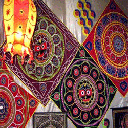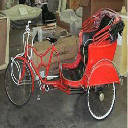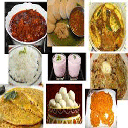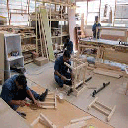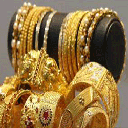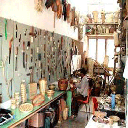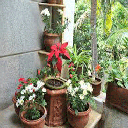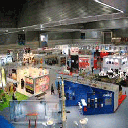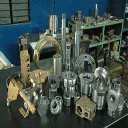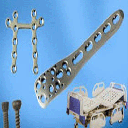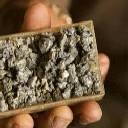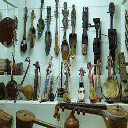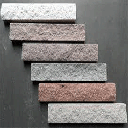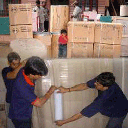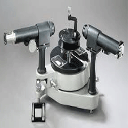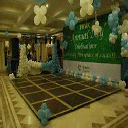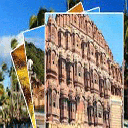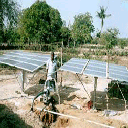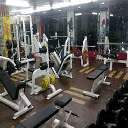Chandigarh, the dream city of India's first Prime Minister, Sh. Jawahar Lal Nehru, was planned by the famous French architect Le Corbusier. Picturesquely located at the foothills of Shivaliks, it is known as one of the best experiments in urban planning and modern architecture in the twentieth century in India.
Chandigarh derives its name from the temple of "Chandi Mandir" located in the vicinity of the site selected for the city. The deity 'Chandi', the goddess of power and a fort of 'garh laying beyond the temple gave the city its name "Chandigarh-The City Beautiful".
The city has a pre-historic past. The gently sloping plains on which modern Chandigarh exists, was in the ancient past, a wide lake ringed by a marsh. The fossil remains found at the site indicate a large variety of aquatic and amphibian life, which was supported by that environment. About 8000 years ago the area was also known to be a home to the Harappans.
Since the medieval through modern era, the area was part of the large and prosperous Punjab Province which was divided into East & West Punjab during partition of the country in 1947. The city was conceived not only to serve as the capital of East Punjab, but also to resettle thousands of refugees who had been uprooted from West Punjab.
In March, 1948, the Government of Punjab, in consultation with the Government of India, approved the area of the foothills of the Shivaliks as the site for the new capital. The location of the city site was a part of the erstwhile Ambala district as per the 1892-93 gazetteer of District Ambala. The foundation stone of the city was laid in 1952. Subsequently, at the time of reorganization of the state on 01.11.1966 into Punjab, Haryana and Himachal Pardesh, the city assumed the unique distinction of being the capital city of both, Punjab and Haryana while it itself was declared as a Union Territory and under the direct control of the Central Government.
Fact File
The basic geographical and demographic profile of Chandigarh is as under:
Area 114 sq kms Longitude 760 47' 14E Latitude 300 44' 14N Altitude 304-365 meters above MSL with 1% drainage gradient Annual Rainfall (average) 1110.7 mm Monsoon July-September TemperatureWinter Min. (Nov.-Jan, 2006) 10 C-160 C
Summer Max. (April-July, 2004) 270C-440C
Prevalent Winds From the North West to South East in Winter and reverse in Summer Total Population (2001 census)9,00,635 (Rural population-92120 (10.2%)
(Urban population-808515 (89.8%)
Density of population/sq. km. 7,900 Birth Rate (per 1000) 21.45 (2005) Death Rate (per 1000) 10.22 (2005) Infant Mortality Rate (per 1000) 44.13 Sex Ratio (females per 1000 males) 777 Decennial Population Growth 40.33% Literacy Rate 81.9%Sector 17 Plaza
One of the most important places to visit is Sector 17, Chandigarh's sleek shopping area and the city centre. Planned around four pedestrian concourses meeting at a central chowk (intersection), the Sector 17 of Chandigarh is a pedestrian's paradise dotted with fountains, sculptures, and groves of trees. In summers the tourists move from one end of the sector to the other, under the shade of a corridor, and in winter it is nice to be out in the sun-drenched piazzas. In the evenings, when the colorful mosaic of neon signs and the aesthetically illuminated fountains come alive, Sector 17 becomes the Chandigarh city's biggest outdoor club.
Government Museum and Art Gallery
The Government Museum and Art Gallery in Sector 10 of Chandigarh has a fine collection of stone sculptures of the Gandhara period. The museum is the place to see the prehistoric fossils and artifacts along with modern art and miniature paintings. The Government Museum and Art Gallery of Chandigarh is open from 10.00 a.m. to 4.30 p.m. and is closed on Mondays.more......
Museum of Evolution of Life
The Museum of Evolution of Life in Sector 10 of Chandigarh takes tourists on a trip 5,000 years back from the Indus Valley Civilization to the present day. Chandigarh city's Museum of Evolution of Life is open from 10.00 a.m. to 4.30 p.m. and is closed on Mondays.
International Dolls Museum
The International Dolls Museum in Sector 23 of Chandigarh has an interesting collection of dolls and puppets from all over the world covering the variant art of more than 25 countries. Chandigarh city's International Dolls museum is closed on Sundays.
The Hidden Valley
The Hidden Valley is an Ecotourism camping adventure site in the Shivalik Foothills. It is located near the famous Mata Jainti Devi Temple in Village Jainti Majri, Punjab. Besides being in the pristine nature, it offers Ecotours, Tents, Trekking, Various Jungle safaris like – Camel safari, Horse Safari, Mountain Biking, Bird Watching, Group Games in Nature, Slides & Swings, Cart Rides, Glance of Village life Activities and many more. A great experience of raw nature & countryside life and a good break from the routine city life!!
By Air Chandigarh domestic airport is 8 km away from city center. Cab costs about Rs 100 to cover the distance. Most of the air services provide daily flights to Delhi from Chandigarh. International travelers have to get connection through Delhi Airport. Delhi Airport is connected to all major cities in India and most of the foreign cities.
By Train Chandigarh is connected by rail to many cities in Punjab, Haryana and also to Delhi. Frequent trains are running between Delhi and Chandigarh (260 km). One can get connection trains to Mumbai, Chennai, Bangalore and Trivandrum (Kochu Veli) from Chandigarh. Daily trains are available from Chandigarh to Lucknow.
By Bus State owned buses connect Chandigarh to all nearest cities in Punjab and Haryana. Deluxe Volvo buses and semi deluxe buses are available from Shimla (110 km), Manali (320 km), New Delhi (260 km) and Dehradun (175 km). Deluxe buses charge Rs 3-4 per kilometer.


